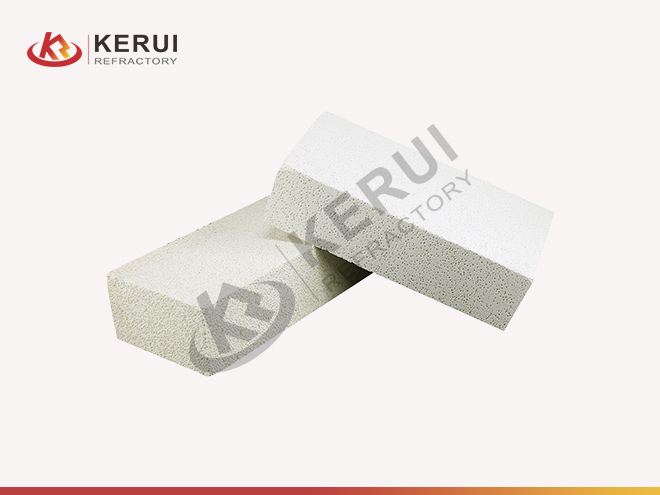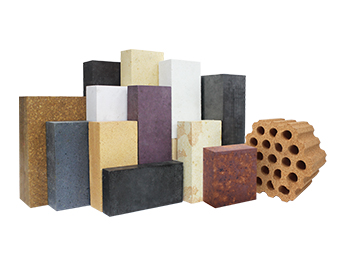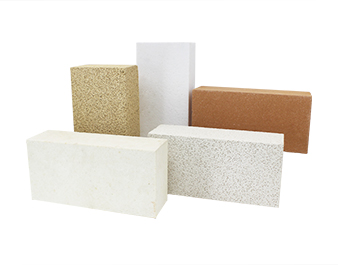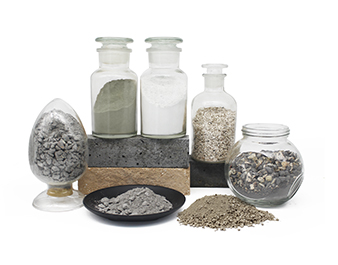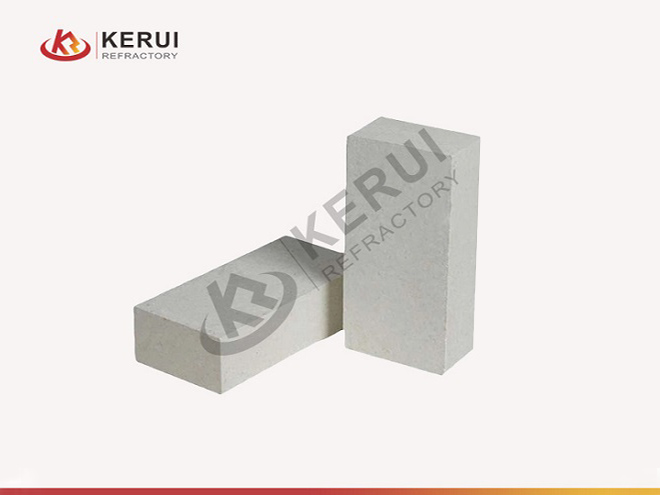
Mullite Refractory Brick
Mainly used in hot blast furnace tops, blast furnace shafts and bottoms, glass melting furnace regenerators, ceramic sintering kilns, dead-end furnace linings in petroleum cracking systems…
- Al2O3% (≥): 62-70
- Fe2O3)/%(≤): 1.5-1.8
- Refractoriness Under Load (℃)(≥): 1760-1780
- Cold Crushing Strength (MPa)(≥): 25
- Standard Size: 230*114*65mm
- Sample: testing of sample is available
Description of Mullite Refractory Brick
The main component of mullite brick is mullite, which is formed by the reaction of aluminum (Al2O3) and silicon dioxide (SiO2) at high temperatures. Mullite is a high-quality refractory material, which is very rare. Mullite is a mineral formed by the crystallization of aluminosilicate at high temperatures. It has high crystallinity, excellent heat insulation effect, low heat conduction activity, and remarkable energy-saving effect. Mullite bricks are divided into sintered mullite bricks and cast mullite bricks.
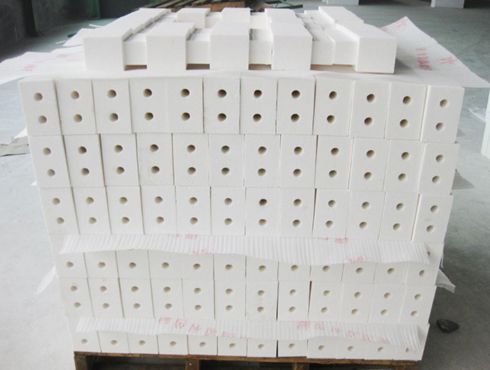
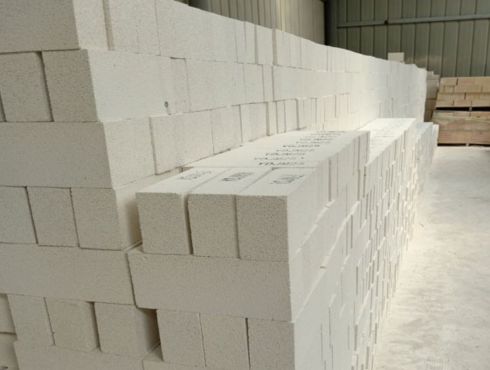
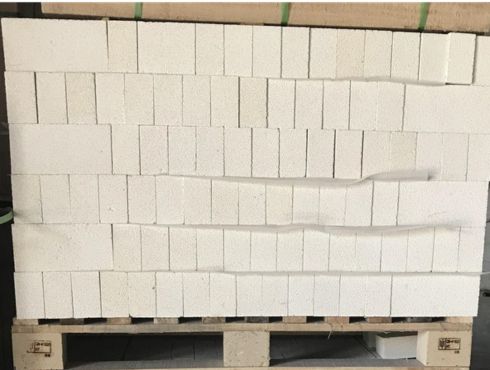
Kerui Mullite Refractory Brick Technical Data Sheet
| Item/Grade | JM-70 | JM-62 | |
|---|---|---|---|
| ω (Al2O3)/% | μ0 ≥ | 70.0 | 62.0 |
| ở | 3.0 | ||
| ω (Fe2O3)/% | μ0 ≤ | 1.8 | 1.5 |
| ở | 0.2 | ||
| Refractoriness/℃ | μ0 ≥ | 1780 | 1760 |
| ở | 10 | ||
| Apparent Porosity/% | μ0 ≤ | 28 | 26 |
| ở | 2 | ||
| Cold Crushing Strength/MPa | μ0 ≥ | 25 | |
| ở | 7 | ||
| Permanent Linear Change (1500℃*2h)/% | Xmin~Xmax | -0.1~+0.4 | |
Advantages of Mullite Refractory Brick
High Refractoriness
Mullite is a mineral with a high melting point. Mullite bricks have excellent refractory properties. They can withstand heat energy and flames in high-temperature environments, and maintain structural stability and integrity. It is resistant to erosion by molten substances under high-temperature conditions, keeping its function and performance unaffected. This makes mullite brick an important choice among refractory materials, widely used in high-temperature industrial fields.
High Thermal Conductivity
The presence of interconnected channels within the mullite structure facilitates efficient heat transfer, and these channels allow rapid conduction of heat through the brick, resulting in high thermal conductivity, the ability to conduct heat quickly and maintain a relatively uniform temperature distribution. High thermal conductivity helps to efficiently transfer heat to surrounding areas, improving heat transfer efficiency and reducing heat build-up and temperature gradient effects on devices. This makes mullite bricks useful in high-temperature applications.
Good Creep Resistance
Mullite has a crystalline structure that shows resistance to deformation under long-term high temperatures and constant stress. Therefore, mullite bricks can maintain the stability of their shape and structure under high temperature and continuous pressure conditions, and will not change their shape due to stress. The good creep resistance of mullite brick ensures its stability in high-temperature working environments and prolongs its service life.
Strong Ability to Resist Acid and Alkali Slag
Mullite bricks have excellent resistance to acid and alkali slag and can resist the corrosion of acidic or alkaline media. In the fields of oil refining, chemical industry, metallurgy, and chemical industry, media with acidic or alkaline properties are often involved. Mullite bricks can withstand the corrosion of these media and protect equipment from corrosion damage.
Types of Mullite Refractory Brick
Sintered Mullite Brick
Sintered mullite bricks are made of sintered mullite as a granular material, fine powder as synthetic mullite, adding a small amount of clay or raw bauxite as the binder, forming and firing.
Fused Mullite Brick
Fused mullite bricks are made of high bauxite or industrial alumina, silica, or refractory clay, melted in an electric arc furnace, cast, and annealed.
Application of Mullite Refractory Brick
Iron Industry
Mullite bricks are often used in the roof and side walls of electric arc furnaces, heating furnaces in rolling mills, hot blast stoves, bosh, hearth, and chimney linings in blast furnaces. Mullite bricks play an essential role in the above applications, providing properties such as fire resistance and wear resistance, protecting equipment from high temperature and chemical attack while improving the efficiency and safety of industrial production.
Cement Industry
The kiln lining and burner pipes of the rotary kiln, the cyclone stage and standpipe of the preheater, the transition zone of the cement kiln standpipe and the outlet of the calciner, the preheating tower and the calciner chamber of the cement precalciner, etc. The application of mullite bricks in the cement industry helps protect critical equipment from high temperature and chemical attacks, prolongs the service life of equipment, improves the stability and efficiency of the production process, and simultaneously ensures the quality and consistency of cement products.
Glass Industry
Fiberglass insulation for furnace insulation and roof modules, orifice rings, and nozzle bowls for glass-forming equipment. These parts require materials resistant to high temperature, thermal shock, and chemical attack, mullite bricks can provide excellent fire resistance and long service life while maintaining the thermal insulation performance of glass-melting furnaces.
Power Industry
Gasifiers, biomass boilers, and waste-to-energy plants. Mullite bricks are resistant to high temperatures and corrosive gases in these areas, ensuring efficient biomass combustion and power generation processes.

